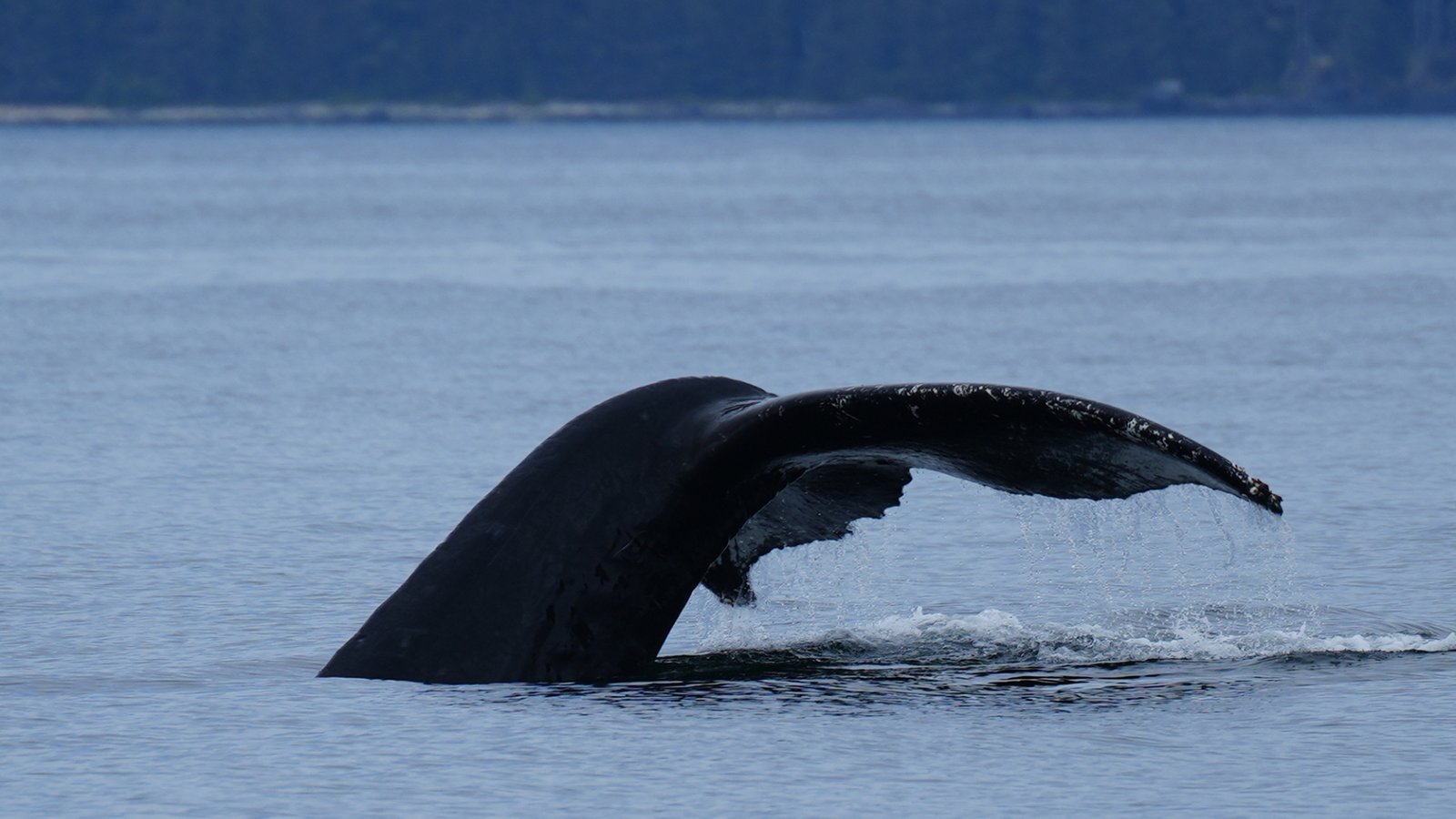Hello All,
The whale activity during our recent research days has been nothing short of extraordinary. In just two days, we’ve documented 19 identifiable humpback whales and one pod of orcas, and that doesn’t even include the many others spotted in the distance, too far for clear photos. Not even two minutes after leaving the dock the other morning, I found myself sprinting back for the camera as a humpback surfaced right at the mouth of the bay.
We’ve observed a wide range of behaviors: lunge feeding, breaching, traveling, and even resting. Our days are spent with wide eyes scanning the horizon, always on the lookout for the next fluke or dorsal fin to photograph.
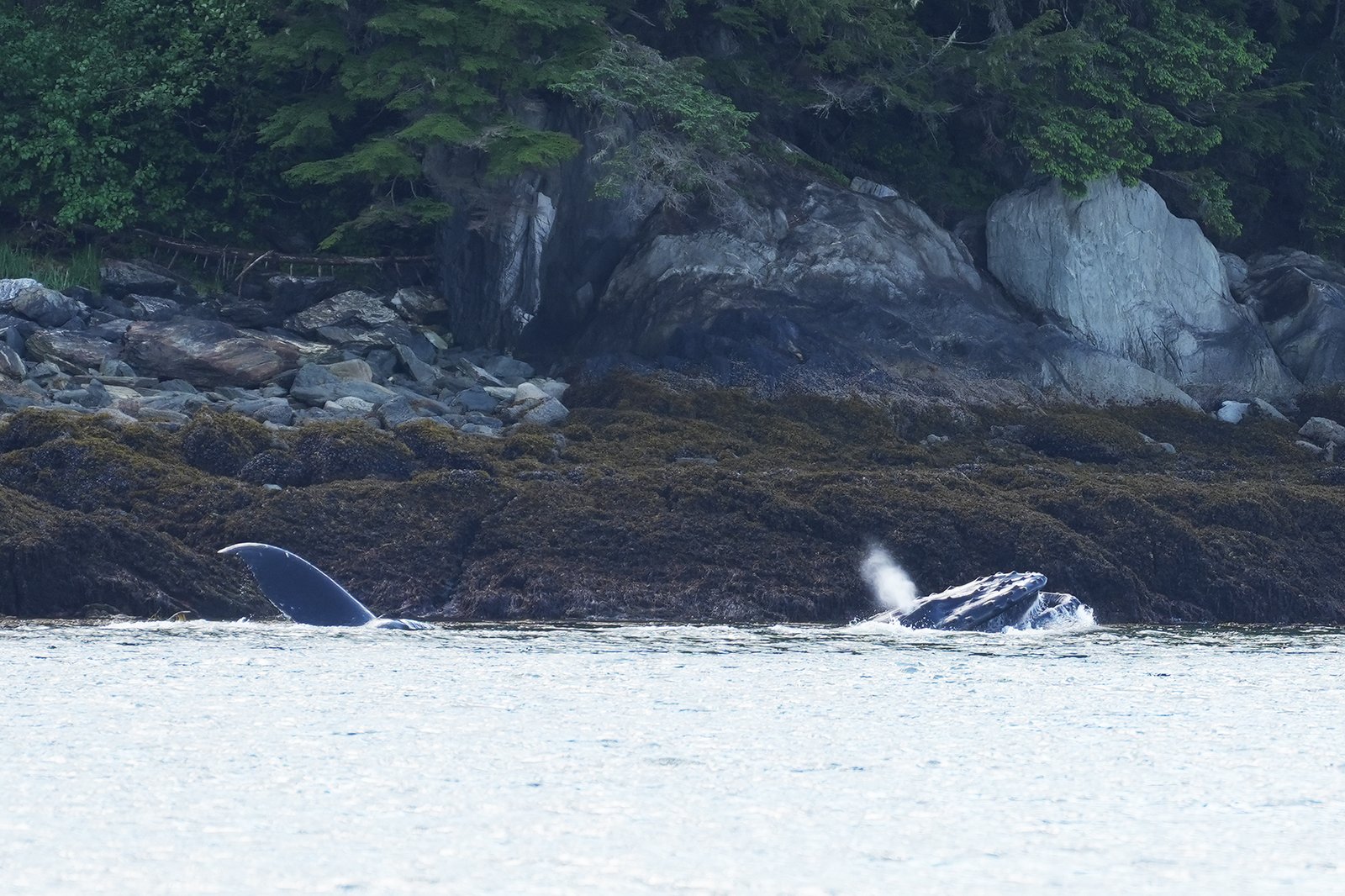
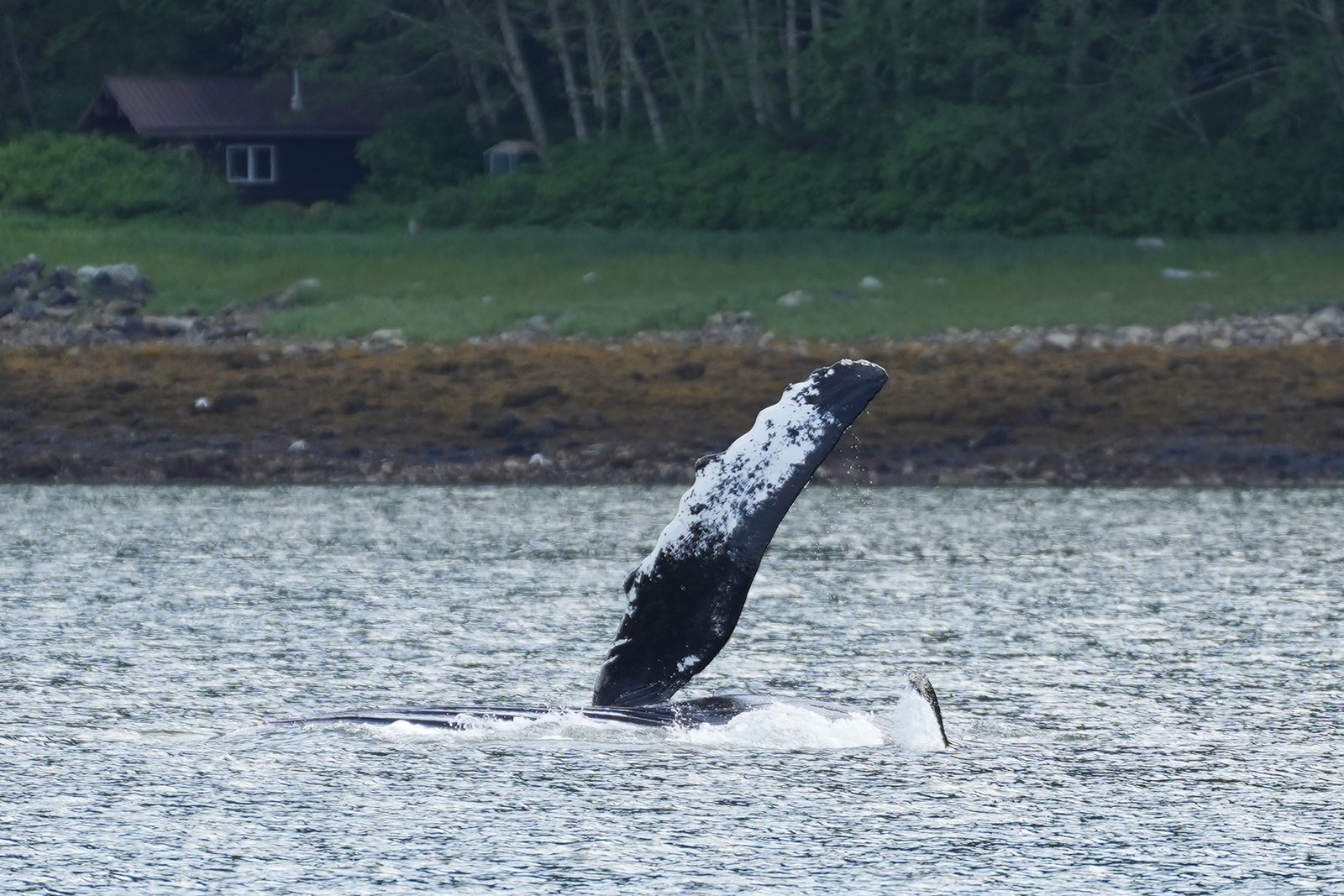
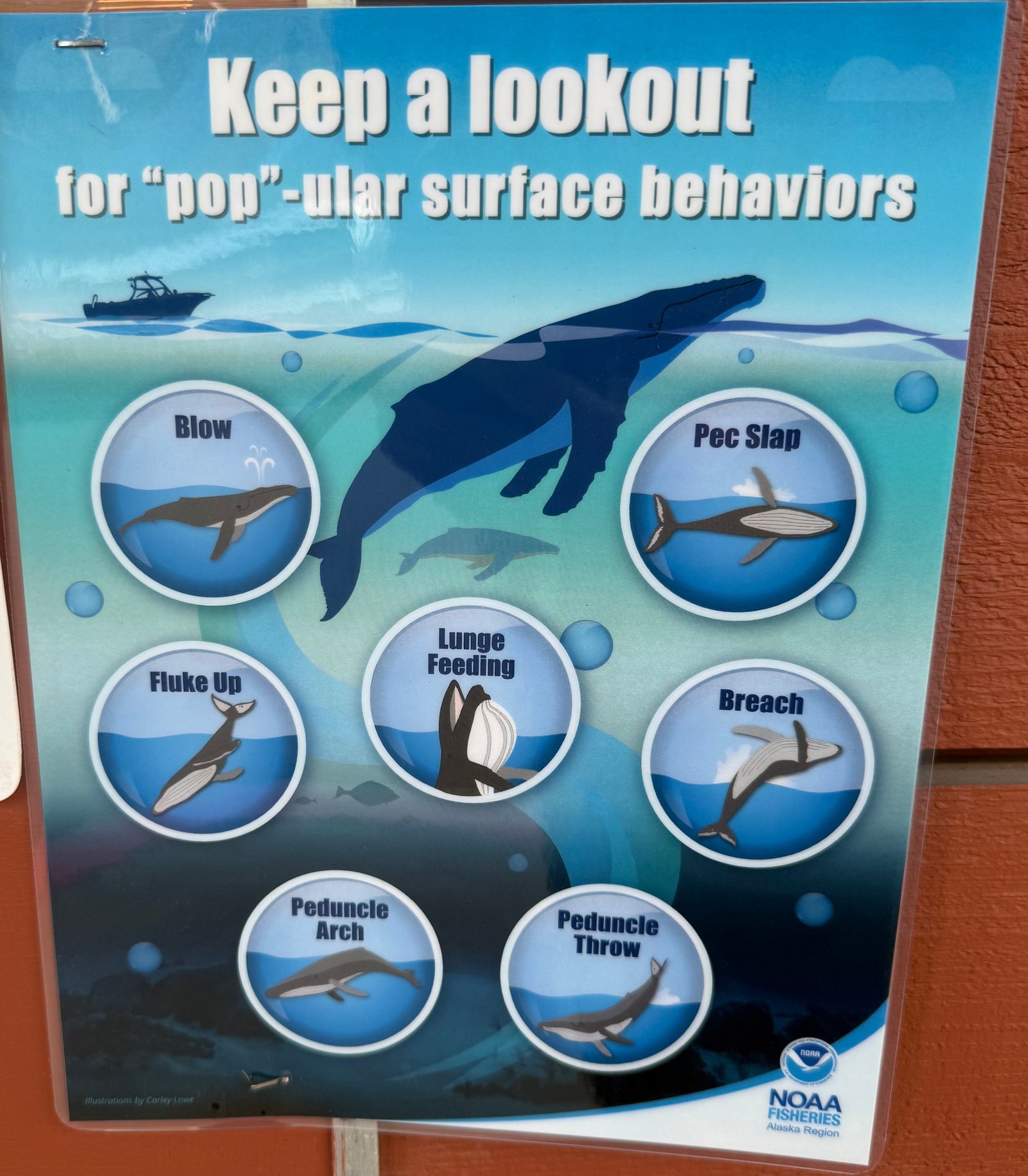
One of our onboard research projects focuses on whale identification. Every time we spot a whale, we quickly pull out the camera and capture identifiable photographs, while documenting the whale’s behavior and location. These ID photographs highlight unique features, one example is the fluke (tail) of a humpback whale. Each fluke is distinct, like a fingerprint, which allows researchers to identify individuals and track their movements over time. For orcas and fin whales, we rely more on dorsal fins.
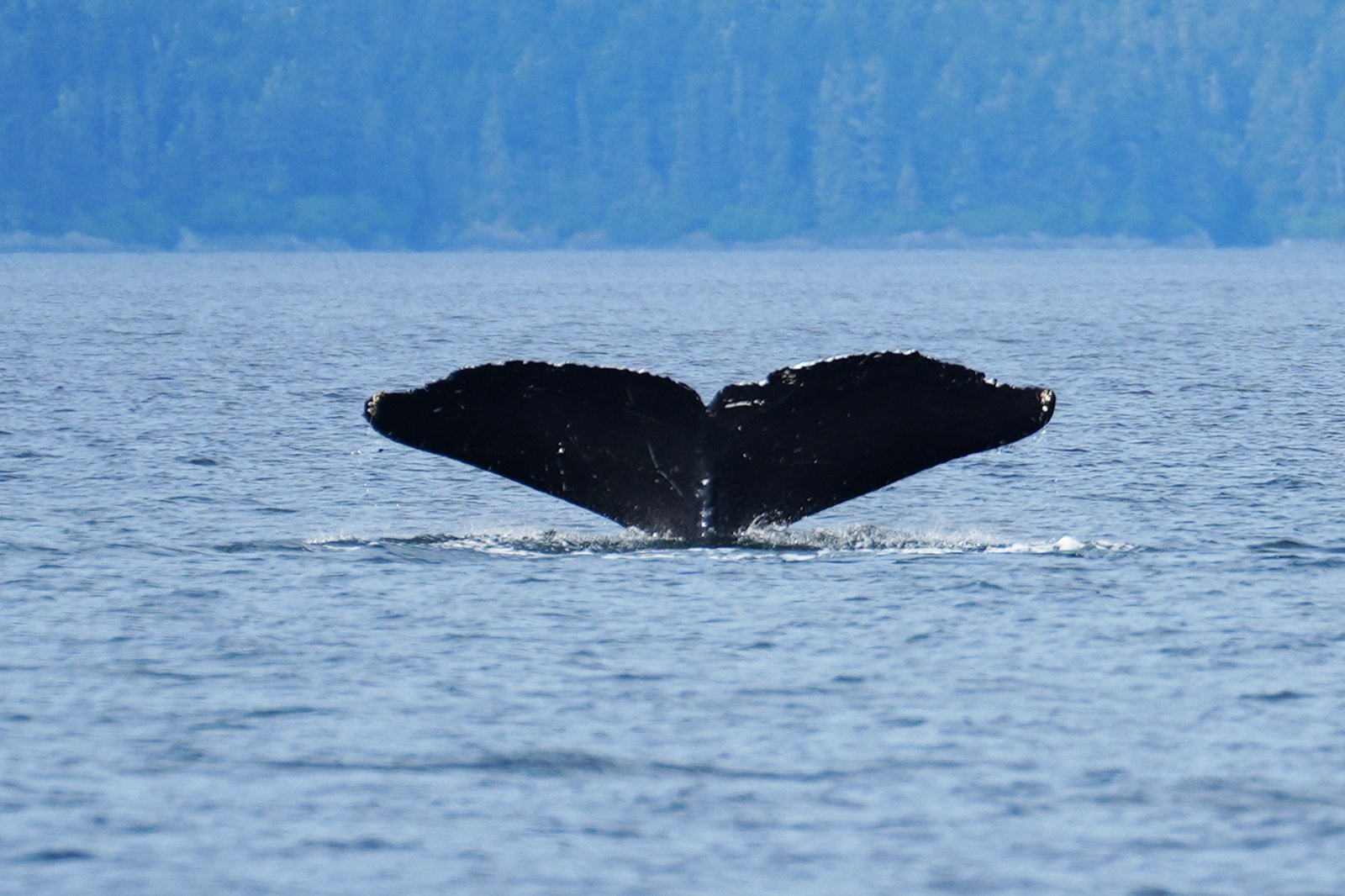
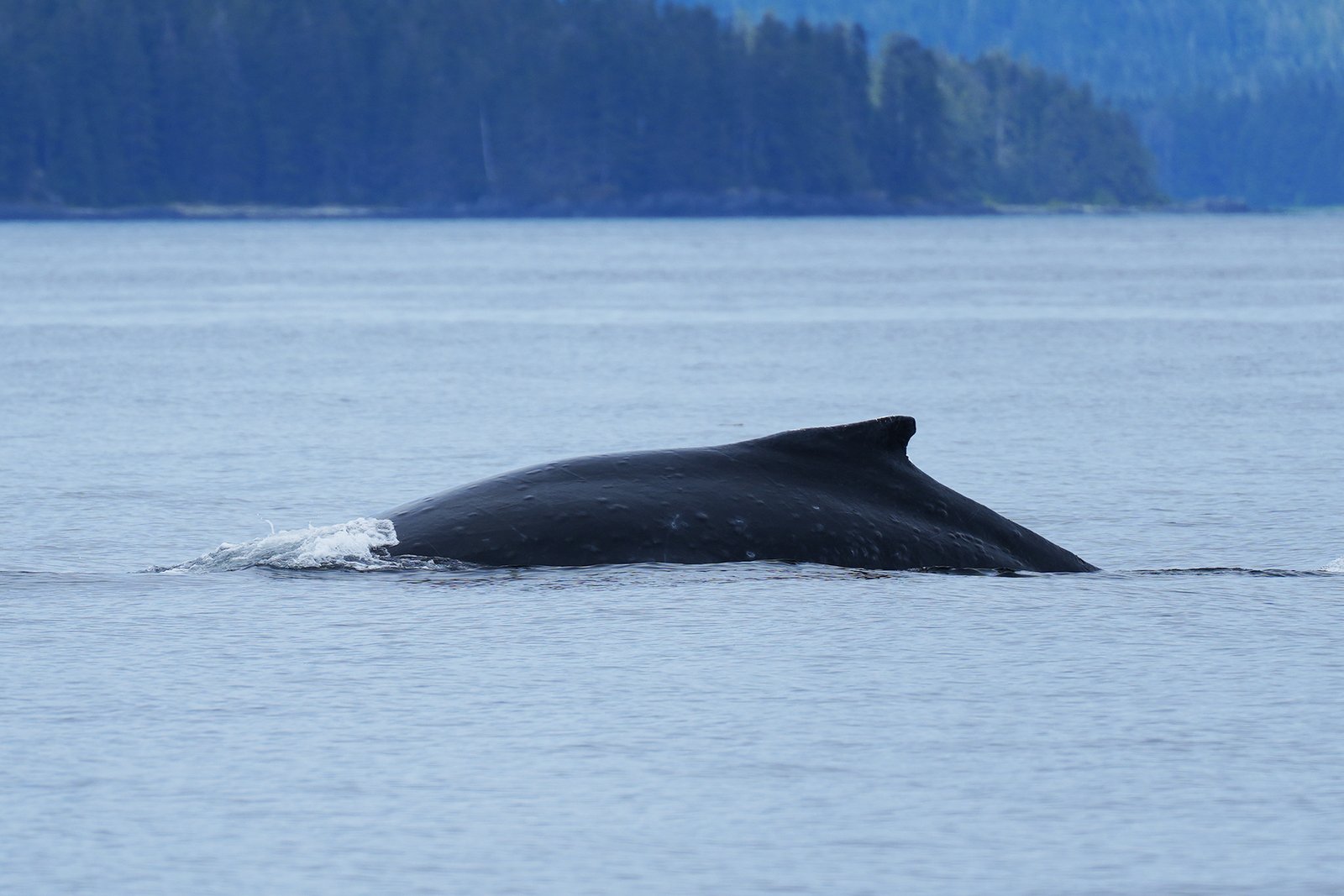
Interestingly, you can distinguish between resident and transient orcas based on subtle differences between the dorsal fin, eyepatch, and saddlebag. For example, resident orcas typically have an "open" saddle patch, whereas transient orcas have a "closed" one. Capturing clear images of these features is important for later analysis as we work to identify individuals and gather valuable data.
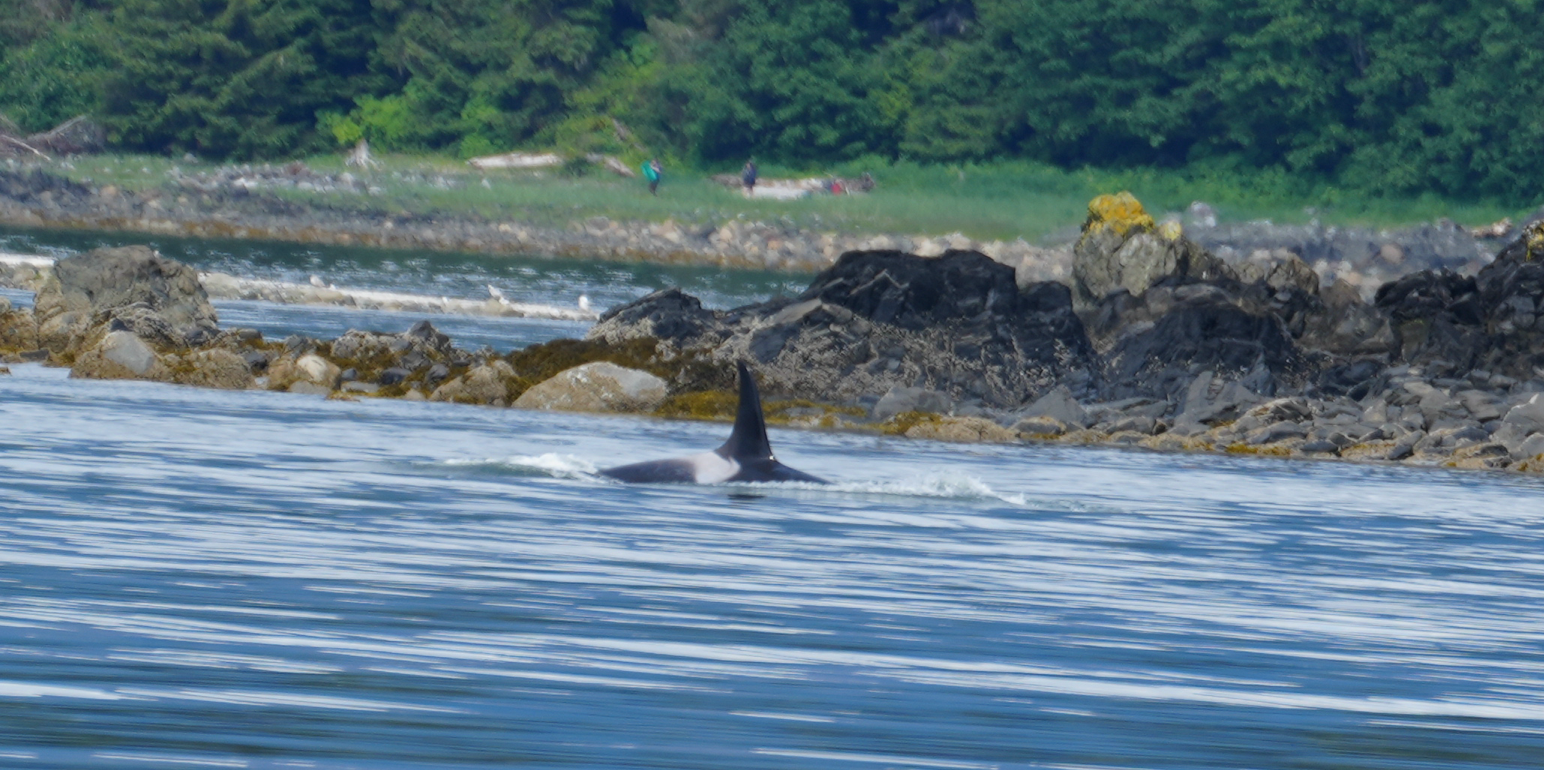
In addition to photographs, we record behavioral observations and precise locations. This information helps researchers study social structures, site fidelity, movement patterns, group composition, feeding behavior, and prey types, all of which contribute to identifying critical habitats. This work also plays a role in assessing human-induced threats, such as ship strikes and entanglements, supporting the development of marine protected areas, vessel slow-down zones, and targeted conservation strategies.
We’re proud to be partnering with BC Whales, North Coast Cetacean Society (NCCS). For over two decades, they’ve been leaders in whale protection along British Columbia’s coast through a combination of science, long-term monitoring, and collaboration.
BC Whales conducts land-based research, collects long-term data on whale sightings and behavior, and carries out marine surveys to track population trends and habitat use. Their drone program allows researchers to monitor whales from above, gathering information on body condition and even collecting genetic samples without disturbing the animals. These efforts support ongoing genetics research, which helps identify individual whales and monitor health across populations.
One of their most impactful initiatives is the BC Hydrophone Network, a collaborative project that deploys underwater microphones (hydrophones) along the coast to listen to whale vocalizations in real time. This allows scientists to track movements, identify key habitats, and monitor how whales are affected by human activities, especially noise pollution from ship traffic. The ability to "listen in" across nearly the entire BC coastline is an incredible achievement that will yield very important insights.
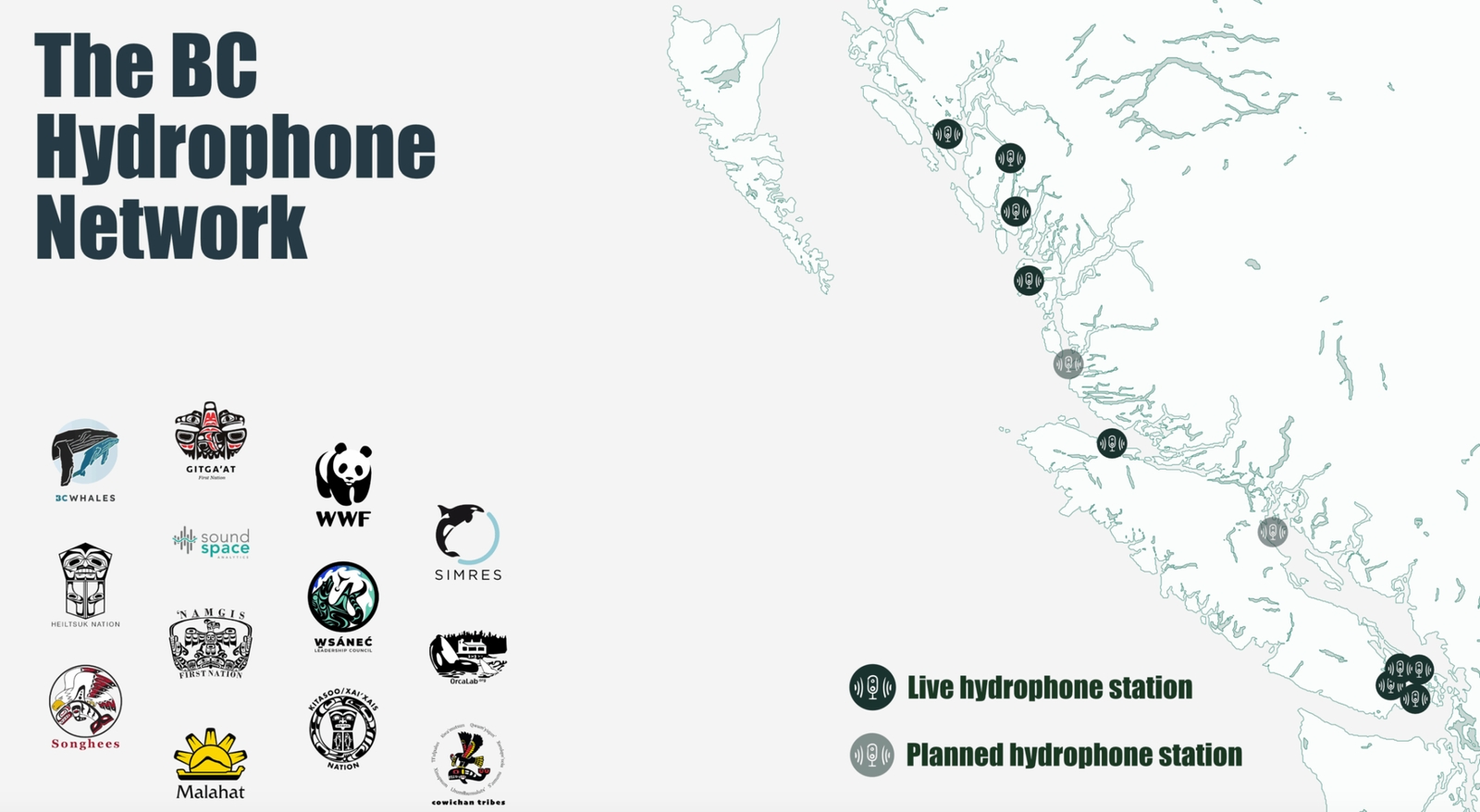
We were lucky enough to meet with Janie Wray, the CEO and founder of BC Whales, during a recent stop in Alert Bay. Over dinner, we learned about their latest project: the installation of a new hydrophone in Alert Bay. It is an exciting addition that will allow researchers to hear the whales and the traffic moving through those waters.
By integrating tools like photography, hydroacoustics, aerial monitoring, and genetic research, BC Whales is deepening our collective understanding of whale behavior and the threats they face, and turning that knowledge into meaningful conservation action.

We’re thrilled to be contributing to their mission by collecting whale ID data at sea and sharing it with their team. It’s a privilege to support their efforts and to learn from such passionate and dedicated researchers.
From the Field,
Grace

